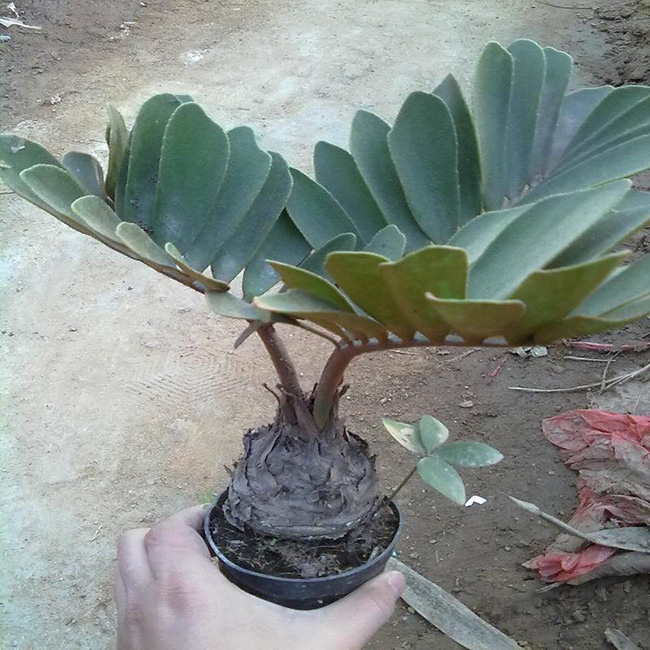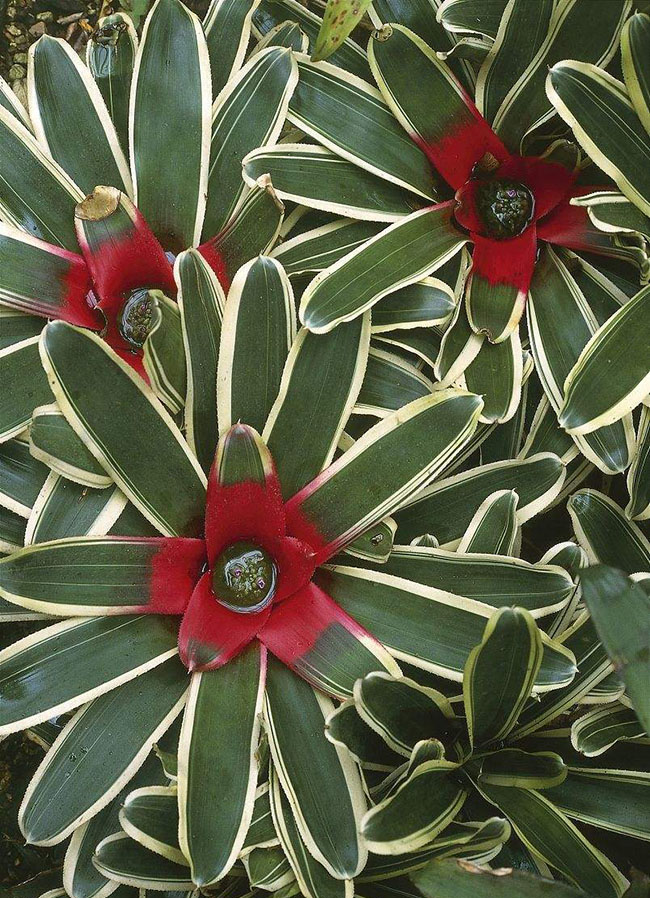Culture methods and matters needing attention of star begonia
Star begonia
Star begonia, also known as white-colored begonia, native to Brazil in South America, has been introduced in China. Star begonia is a shrub with thin stems and elliptical lanceolate leaves with silver spots. The flowers are white and green. Long flowering period, many colors, rich variety, is a kind of beautiful flowers and leaves.
Morphological characteristics of Begonia chinensis
Shrubs, much branched. The stem is relatively thin, 60cm to 100cm high, the new branch is green, the old branch is purple-brown, and the branch apex is pendulous. Leaves oval-lanceolate, surface bright green, glossy, with numerous silver-white spots. The flowers are white and green.
The common cultivated species of the same genus are: bamboo begonia (B. presiden-carnot): the stem of the whole plant is smooth and the stem node is similar to bamboo node. The leaves are alternate, oblong and oblique, the surface is green, most of the spots are small, and the back and petiole are crimson.

Distribution area of star begonia
Star begonia is distributed in the provinces and regions south of the Yangtze River. Produced in Hebei, Henan, Shandong, Shaanxi, Sichuan, Guizhou, Guangxi, Hunan, Hubei, Anhui, Jiangxi, Zhejiang, Fujian, Liaoning, Jiangxi, Jiangsu, Yunnan and so on. It is cultivated in Kunming. On moist mountain walls of raw valleys, dense forests along valley streams, rocks along gullies and valley shrubs, 100-1100 m above sea level
Growth environment of star begonia
Star begonia is a temperate species, like scattered light and humid environment, cold resistance is not strong. The soil needs to be loose and well drained.
The main value of star begonia
Short, multi-flowered flowering begonia, used to decorate flower beds and lawn edges. Potted star begonia is mostly used to decorate the living room, window or for family balcony, windowsill, coffee table decoration. It is not only used in outdoor cultivation such as courtyard and flower bed, but also a good product for indoor family desk, coffee table, desk and shop window decoration. And its stems and leaves have good medicinal and edible value.
Propagation method of Begonia chinensis
Commonly used sowing or cutting propagation, can also be used ramet propagation.
The main results are as follows: 1. Sowing and propagation can be carried out in early spring, and the mature seeds can be sown in the propagation basin, filled with humus soil and kept at about 16 ℃ and a certain humidity to take root. When 2-3 true leaves appear in the seedlings, they can be transplanted into the pot.
2. The best effect of cutting propagation is from May to June. The top shoots of the plant are selected as cuttings, which are about 10 to 15 centimeters long and inserted into the sand bed. The sand bed is sprayed every day, and it can take root 2-3 weeks after insertion.
3. Clustered varieties can also be propagated by ramets. Divide the roots of the plants full of pots into several clumps to avoid damaging the roots, and then plant them in the pots.
Cultivation techniques of star begonia
The culture soil should be mixed with rotten leaf soil, peat soil and garden soil, and the plants should be preserved in the semi-shade or bright light in the greenhouse. The leaves are tender and prone to fester, so we should pay attention to shade after summer to avoid direct sunlight and leaf edge burns.
The growing season should be watered frequently to keep the basin soil moist. When the room temperature is lower than 15 ℃ in winter, watering should be strictly controlled, or spray should be used instead of watering. The suitable temperature for growth is 18-21 ℃. High temperature can easily cause scorched leaves. In the hot season, pay attention to the humidity of the surrounding air and spray it 2 times or 3 times a day. During the growing period, compound fertilizer rich in phosphorus and potassium can be applied once a month, or dilute liquid fertilizer once a week.
The overwintering temperature should not be lower than 8 ℃. During the overwintering period, if poor management, such as low room temperature, poor light, plants in a semi-dormant state, watering or fertilizing too much, it is easy to rot roots and leaves. Generally speaking, in winter, the plant should be placed in the greenhouse where the sun can be seen in the morning and evening, stop fertilizer and control water, and wash the leaves once a week with water close to room temperature. At ordinary times, proper pruning should be carried out to maintain beautiful plant posture and good ventilation and permeability.
If the root knot insect harms the root system, it will affect the absorption of the root system, resulting in dwarf and chlorosis of the plant, so nematodes such as kexidan can be embedded around the root system for control. In addition, when the air humidity is too large and poor ventilation, Botrytis cinerea is easy to occur, so ventilation and medication should be strengthened.
Culture methods and matters needing attention of star begonia
Commonly used sowing or cutting propagation, can also be used ramet propagation.
1. Sowing and propagation can be carried out in early spring. Mature seeds can be sown in the breeding basin, filled with humus soil and kept at about 16 degrees Celsius and-constant humidity to take root. When 2-3 true leaves appear in the seedlings, they can be transplanted into the pot.
2. The best effect of cutting propagation is from May to June. The shoots at the top of the plant are selected as cuttings, which are about 10-15 cm long and inserted into the sand bed. The sand bed is sprayed every day, and it can take root 2 or 3 weeks after insertion.
3. Clustered varieties can also be propagated by ramets. Divide the roots of the plants full of pots into several clumps to avoid damaging the roots, and then plant them in the pots.
If the root knot insect harms the root system, it will affect the absorption of the root system, resulting in dwarf and chlorosis of the plant, so nematodes such as kexidan can be embedded around the root system for control. In addition, when the air humidity is too large and poor ventilation, Botrytis cinerea is easy to occur, so ventilation and medication should be strengthened.
The Culture method of Star Begonia
Star begonia likes scattered light and humid environment very much, and its cold resistance is not strong.
Soil
The soil of begonia is required to be loose and well drained.
Watering
Water frequently during the growing season and keep the basin soil moist.
Fertilizer application
During the growing period, compound fertilizer rich in phosphorus and potassium can be applied once a month, or dilute liquid fertilizer once a week.
At ordinary times, proper pruning should be carried out to maintain beautiful plant posture and good ventilation and permeability.
Matters needing attention of star-spotted begonia seasonal watering
When the room temperature is lower than 15 ℃ in winter, watering should be strictly controlled, or spray should be used instead of watering. The suitable temperature for growth is 18-21 ℃. High temperature can easily cause scorched leaves.
In the hot season, pay attention to the humidity of the surrounding air and spray it 2 times or 3 times a day.
Overwintering
The overwintering temperature should not be lower than 8 ℃. In winter, the plant should be placed in the greenhouse where sunlight can be seen in the morning and evening, stop fertilizer and control water, and wash the leaves once a week with water close to room temperature.
Propagation method of star begonia, sowing and propagation
Can be carried out in early spring, the mature seeds will be sown in the breeding basin, filled with humus, keep about 16 ℃ and a certain humidity, can take root. When 2-3 true leaves appear in the seedlings, they can be transplanted into the pot.
Cuttage propagation
The best effect was from May to June, and the top shoots of the plant were selected as cuttings, which were about 10-15 cm long and inserted into the sand bed. The sand bed is sprayed every day, and it can take root 2-3 weeks after insertion.
Ramet propagation
Clustered varieties can also be propagated by individual plants, dividing the roots of the plants full of pots into several clumps, to avoid damaging the roots, and then planting them in the pots.
Prevention and control of diseases and insect pests of begonia
If the root knot insect harms the root system, it will affect the absorption of the root system, resulting in dwarf and chlorosis of the plant, so nematodes such as kexidan can be embedded around the root system for control.
In addition, when the air humidity is too large and poor ventilation, Botrytis cinerea is easy to occur, so ventilation and medication should be strengthened.
- Prev

Culture methods and matters needing attention of Phoenix tail plantain with beautiful leaves
Fengwei banana, also known as broad-leaved cycad, is a plant of the genus Tetranychus, native to America and other places. Morphological characteristics of Phoenix tail plantain with high 15~20cm, single stem or rare branches, sometimes tufted, coarse branches, cylindrical, densely covered with dark brown leaf scars.
- Next

Breeding methods and matters needing attention of colorful leaf pineapple
Pineapple growth habits like warm, humid, sunny environment, only in bright light conditions, can blossom normally and get the most beautiful leaves, but still need to prevent direct sunlight at noon in summer. The suitable growth temperature is 20-30 ℃ in summer and 15-18 ℃ in winter.
Related
- Fuxing push coffee new agricultural production and marketing class: lack of small-scale processing plants
- Jujube rice field leisure farm deep ploughing Yilan for five years to create a space for organic food and play
- Nongyu Farm-A trial of organic papaya for brave women with advanced technology
- Four points for attention in the prevention and control of diseases and insect pests of edible fungi
- How to add nutrient solution to Edible Fungi
- Is there any good way to control edible fungus mites?
- Open Inoculation Technology of Edible Fungi
- Is there any clever way to use fertilizer for edible fungus in winter?
- What agents are used to kill the pathogens of edible fungi in the mushroom shed?
- Rapid drying of Edible Fungi

